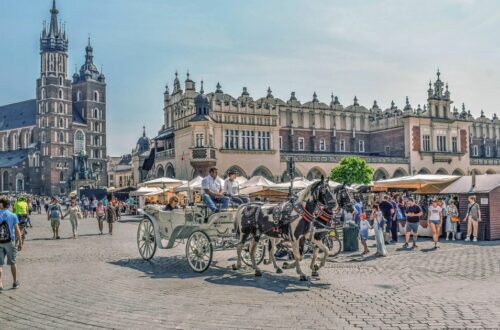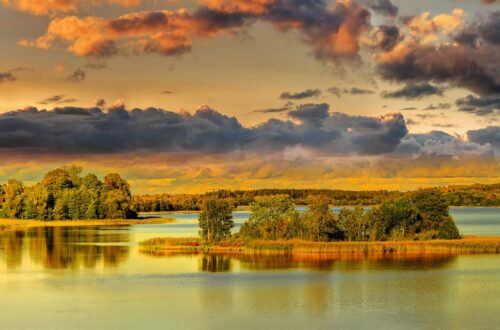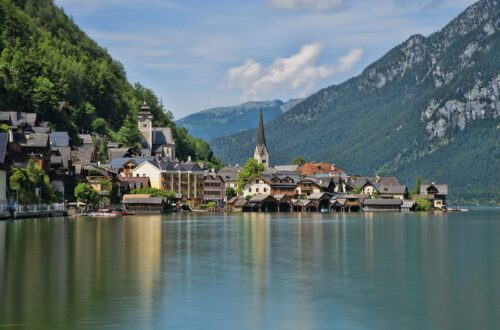10 Exciting Things To Do in Czestochowa
Considered the spiritual capital of Poland, Czestochowa is a city in the Slask region in the southern part of Poland. The city is renowned for being the most popular pilgrimage site in Poland. Known for its religious history and impressive cultural heritage, Czestochowa offers plenty of things to do and see for tourists and pilgrims alike.
From the famous shrine of Our Lady of Jasna Gora, where you’ll find the Black Madonna painting and host to a wide range of events and festivals year-round to the colorful architectures and monuments, many holidaymakers in Krakow always plan a day trip to this popular city.
Nonetheless, it is a popular vacation spot amongst tourists as well as there are plenty of activities to keep visitors busy for days.
Every year, millions of pilgrims from different parts of the globe come to this spiritual city to pay their respect to the shrine whilst enjoying the serenity that this city has to offer.
Though a bit off the beaten track when it comes to Polish vacation destinations, the city is well worth a visit. Check out the top things to see and do in Czestochowa!

1. The Black Madonna Painting
Travelers enter into this city in droves to come to see the image of our Lady of Czestochowa, the iconic Black Madonna Painting, known locally as Jasnogórski Cudowny obraz Najświętszej Maryi Panny Niepokalanie Poczętej.
Located in the popular Jasna Gora monastery, the painting draws more than 100,000 pilgrims to this spiritual Polish capital annually. Dating back to the 14th century, the Black Madonna painting, which features Virgin Mary holding baby Jesus is the brainchild of Luke the Evangelist.
It was from this altar that Polish kings say a few words of prayer before going to the war front. Many who come back alive and victorious return to the altar with their votive offerings.
The victory over Swedish forces at Jasna Gora in 1655 and the success in the Battle of Vienna in 1683 were attributed to the painting. On this same altar, John Paul II offered a Golden Rose and the belt that saved his life during a failed assassination attempt in 1981. You’ll find these items sitting right next to the painting.
Visitors can see this beautiful piece of artwork on a daily basis. However, there are specific times of the day when the painting is unveiled. So plan accordingly.

2. Jasna Gora Monastery
The stunning Jasna Gora Monastery draws in thousands of Catholic pilgrimage annually. The historic complex houses the famous Black Madonna painting and the Nobel Peace Prize medal received by Lech Walesa, an ex Polish President.
The church’s interior is beautifully adorned. If you are lucky, you can join in the processions held in the church at specific periods. Jasna Gora Monastery has been visited by top personalities in the religious scene, including Pope John Paul II and Pope Benedict.
The chapel is made up of three different parts built in different eras. The first and oldest part is the gothic styled section, which serves as a presbytery, featuring a 17th-century silver altar.
The baroque part is where kings embarking on a military expedition drop their votive offerings, praying to the Virgin Mary for a successful outing. The third part was built in the early 20th century.
This is one of the most beautiful monasteries in not just Poland but also Eastern Europe. The chapel is renowned for being the holiest place in the country, hence the surge in the number of pilgrims and travelers who visit annually.
Pilgrims pour through the gates in their large numbers during the Feast of Our Lady, the Assumption, and the Feast of Mary’s Birth. These events are held in May, August, and December, respectively.
Enjoy stunning views over the city by climbing the over 500 staircases to the top of the chapel’s tower. This is a must-do activity for adventurous souls.

3. Jasna Gora Museums
Though many people visit Jasna Gora in the Holy City of Czestochowa primarily to admire and pay homage to the Black Madonna painting, there’s a lot of things to keep you busy within the monastery ground. Apart from exploring the chapel itself and admiring the views from the top of Poland’s tallest church tower, the monastery has an interesting museum that’s worth your time.
This building is known as the Museum of the 600th Anniversary of Jasna Gora. Explore a collection of Polish national treasures, including votive plaques, candlesticks, antique vestments, and rosaries used by Polish royal families.

Phot credit: Pudelek (Marcin Szala)
4. Wander Through Holy Virgin Mary Avenue
In terms of beauty and activities, the Holy Virgin Mary Avenue competes favorably with Ulica Piotrkowska in Lodz, the longest shopping street in Europe.
This stunning avenue is lined with cafes, drinking spots, eating establishments, and stores. Here, you will also find lots of religious sites, including the Kościół Najświętszego Imienia Maryi.
On both sides of the streets are beautifully placed lines of long trees that blossom during springs. Other impressive buildings to admire along this long boulevard include the city’s main museum, the City Hall, and the Church of the Holy Zygmunt.

5. Olsztyn
Just a few minutes southeast of the Holy City of Czestochowa lies Olsztyn, a 14th-century castle. Built by King Kazimierz Wielki, the castle was built to serve as a fortress to protect Lesser Poland, particularly from the Czech Army. For hundreds of years, the castle endured severe destruction and major renovation works.
It also housed many Polish rulers; hence it played a significant role in shaping the history of not just the city but also Poland.
The castle’s current state is the handiwork of the Swedes who destroyed a part of the castles in 1655 during the Deluge. One of the most original pieces found amongst this ruin is the 35-meter circular prison tower, which dates back to the 13th century.

6. Church of St Andrew & St Barbara
Located to the south of Jasna Gora Monastery, this religious site is another popular attraction for pilgrims exploring the city. It is a popular stop for those on the Marian pilgrimage trail. It is noted for its part in the Hussite desecration of the Black Madonna.
Legend has it that the image was abandoned by Hussite robbers in 1430 and that the image was kept clean by a natural spring that rose from the ground. It is also believed that the spring has potential healing properties.

7. City Art Gallery
Located on Aleje, a tree-line avenue bordered by two parks, the City Art Gallery is dedicated to Zdzislaw Beksinski, a 20th-century Dystopian Surrealist.
If you are a fan of this great artist, here is an opportunity to explore more of his works. Some of his works have been a source of inspiration for artists and content creators like Guillermo del Toro, a film director.
In the gallery, visitors are treated to cool soundtracks by Armand Amar, a popular French composer. The interior features a stunning light design.
The art gallery offers visitors a chance to explore contemporary artworks by young Polish artists. This is usually displayed in its temporary exhibitions.

8. Old Market Square
In times past, the Market Square was one of the busiest spots in the city. In the Middle Ages, the square served as the center of commerce. It became more relevant and significant, thanks to its town hall. The town hall remained relevant until 1812, when it was razed down and destroyed during the Napoleonic Wars.
You’ll find a small monument sitting on the southern part of the square, at the same spot where you’ll find the demolished town hall’s foundation.
The square is also surrounded by tenement houses which date back to the 18th and 19th centuries.

photo credit: Slawomir Miejski Wikimedia Commons
9. Dom Frankego (Franke’s House)
As you wander through the streets of the holy city, you may stumble on this lovely townhouse. Strategically located on the corner of I Aleja and Ulica Wilsona, Franke’s House was built in 1903, featuring both Berlin and Viennese styles of architecture. The townhouse housed Adolf Franke, the owner of the textile factory.
One thing that makes this building a famous attraction is the role it played during the Second World War. It’s location on the boundary of the Czestochowa Ghetto even made it a lot easier. Many persecuted Jews escaped the inhuman conditions at the campground through a staircase in the building. Years later, the building was used as a German military hotel and hospital.

10. Museum of Match Production
Want to learn more about industrial history? The Museum of Match Production has got you covered. Built-in 1881, the museum was fully operational until 2010. During its active days, the factory produced the black cat brand matches.
Here you will find the original machinery used for production here. Interestingly, these machines are still in great working condition, and on a guided tour, you can watch these machines perform series of matches making function. You can return home with a few matchboxes.
Coclusion
A trip to the Holy City of Czestochowa is well worth it. With only locals and a few pilgrims on the street, you will have the entire city to yourself. It’s no secret that for many tourists visiting Poland, Krakow is the first choice, and if you’re among them, consider taking a half-day tour to one of the most important places of worship in Poland.




